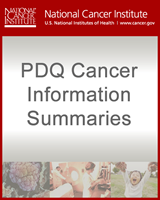| Dopamine antagonists: phenothiazines | Chlorpromazine | 10–25 mg PO q4–6h | PO, IM | Prolongs QT interval | [14
,15][Level of evidence: II] |
| 25–50 mg IM q3–4h |
| Prochlorperazine | 25 mg PR q12h | PO, IM, IV, PR | Less sedation but increased risk of EPS |
[14]
|
| 5–10 mg PO/IM/IV q6–8h |
| Promethazine | 12.5–25 mg q4–6h | PO, IM, IV, PR | Vesicant | [14][Level of evidence: IV] |
| Weak antiemetic |
| Dopamine antagonists: butyrophenones | Haloperidol | 0.5–5 mg q24h in divided doses | PO, IV, IM | Used for treatment | [16][Level of evidence: III] |
| Rarely used for prophylaxis |
| Prolongs QT interval |
| Droperidol | 1–2.5 mg/dose q2–6h | IV, IM | Prolongs QT interval | [14 ,16][Level of evidence: III] |
| Used primarily for treatment |
| Dopamine antagonists: substituted benzamides | Metoclopramide | Prevention of CINV: 1–2 mg/kg IV x1 dose prechemotherapy; then x2 doses q2h; then x3 doses q3h | PO, IM, IV | EPS associated with higher doses; patients <30 y |
[14]
|
| Pretreat with diphenhydramine to prevent EPS |
| Treatment of CINV: 10–40 mg PO q4–6h; up to 0.5 mg/kg PO q6h | Enhances gastric emptying |
| Trimethobenzamide | 300 mg PO q6–8h | PO, IM | Unavailable in United States | [14 ,17][Level of evidence: II] |
| 200 mg IM q6–8h |
| Serotonin (5-HT3) receptor antagonists | Dolasetrona | 100 mg within 1 h prechemotherapy | PO | IV form withdrawn from market due to QTc prolongation |
[14]
|
| Granisetron | 1–2 mg PO or 10 µg/kg up to 1 mg IV within 1 h of chemotherapy | IV, PO, topical, SQ | Transdermal patch applied 24 h prechemotherapy; may be left in place ≤1 wk |
[14]
|
| 3.1 mg/24 h transdermally |
| 10 mg SQ ≥30 min prechemotherapy | SQ extended release should not be given more than once q7d |
| Ondansetron | 0.15 mg/kg IV 30 min prechemotherapy; then may be repeated 4 and 8 h later; maximum: 16 mg/24 h | PO, IV | Doses >16 mg not recommended due to QTc prolongation | [14 ,16][Level of evidence: I] |
| 24 mg PO 30 min before highly emetogenic single-day chemotherapy |
| 8 mg PO 30 min before moderate-emetogenic-risk chemotherapy, followed in 8 h by 8 mg then 8 mg PO q12h for 1–2 d | Post-approval studies show 8 mg IV equivalent to larger doses |
| Palonosetron | 0.25 mg IV or 0.5 mg PO 30 min prechemotherapy day 1 | IV, PO | |
[14]
|
| Substance P antagonists (NK-1 receptor antagonists) | Aprepitant | 125 mg prechemotherapy day 1, then 80 mg daily x2 d | PO | CYP3A4 enzyme inhibitor |
[14]
|
| CYP2C9 enzyme inducer |
| Aprepitant, emulsion | 130 mg prechemotherapy day 1 | IV | Dose equivalent to fosaprepitant 150 mg |
[14]
|
| CYP3A4 enzyme inhibitor |
| CYP2C9 enzyme inducer |
| Fosaprepitant | 150 mg prechemotherapy day 1 | IV | CYP3A4 enzyme inhibitor |
[14]
|
| CYP2C9 enzyme inducer |
| Netupitant (combined with palonosetron) | Netupitant 300 mg/palonosetron 0.5 mg prechemotherapy day 1 | PO | CYP3A4 enzyme inhibitor |
[14]
|
| Fosnetupitant (combined with palonosetron) | Fosnetupitant 235 mg/palonosetron 0.25 mg prechemotherapy day 1 | IV | CYP3A4 enzyme inhibitor |
[14
,18]
|
| Rolapitant | 180 mg prechemotherapy day 1 | PO/IV | Anaphylactic reactions have occurred with IV infusion |
[14]
|
| Doses must be separated by ≥14 d |
| CYP2D6 enzyme inhibitor |
| Corticosteroids | Dexamethasone | 12–20 mg before high-emetic-risk chemotherapy, followed by 8 mg 1–2 times/d for 3 d | PO, IV | Combined with a 5-HT3 receptor antagonist |
[14]
|
| 8 mg before moderate-emetic-risk chemotherapy, followed by 8 mg/d for 2 d | When given with (fos)aprepitant or (fos)netupitant, 12 mg = 20 mg on day 1, and 8 mg is equivalent on subsequent days due to drug interaction |
| Methylprednisolone | 0.5–1 mg/kg 30 min pre- and 4 and 8 h postchemotherapy | PO, IV | Maximum 4 mg/kg/d; may also be given as single dose prechemotherapy | [16][Level of evidence: III] |
| Benzodiazepines | Alprazolam | 0.25–1 mg q6–8h | PO | Shortest half-life in drug class | [14 ,19][Level of evidence: I] |
| Lorazepam | 0.5–2 mg q6h | PO, SL, IM, IV | Most-commonly used in drug class |
[14]
|
| Atypical antipsychotics | Olanzapine | Prevention of acute and delayed CINV in combination with 5-HT3 receptor antagonist, dexamethasone, and NK-1 antagonist: 10 mg PO qd days 1–4 | PO | Consider giving at bedtime due to sedation | [20][Level of evidence: I] |
| Treatment of breakthrough CINV: 10 mg PO daily x3 d | [21][Level of evidence: I] |
| Other pharmacologic agents | Dronabinol | 5 mg/m2 PO 1–3 h prechemotherapy, followed every 2–4 h by same dose, up to 4–6 doses/d | PO | |
[14]
|
| Dose may be increased in increments of 2.5 mg/m2, up to maximum 15 mg/m2 |
| Nabilone | 1–2 mg bid, maximum 6 mg/d in 3 doses | PO | May be continued up to 48 h postchemotherapy |
[14]
|
|
Cannabis
| No current data on dosing | Inhaled, PO | Currently, not enough data to recommend Cannabis products for prevention/treatment of CINV | [22][Level of evidence: IV] |
| Ginger | 0.5–2 g/d prechemotherapy | PO | Current literature demonstrates conflicting efficacy results | [23,24][Level of evidence: II] |
